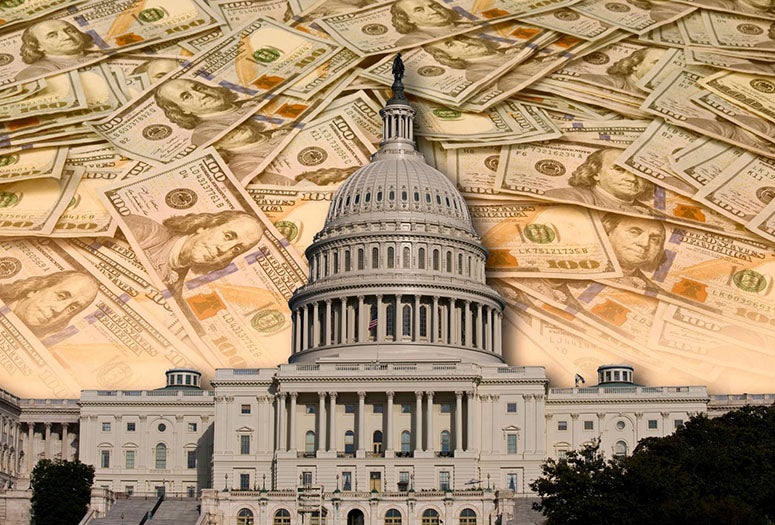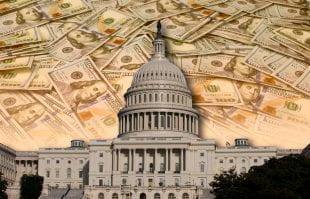U.S. debt is projected to soon eclipse World War II-era levels, and while that sounds problematic, that much growth in government debt won’t weaken the private sector like it did in the 1940s, according to new research by an expert at Rice University's Baker Institute for Public Policy.
Jorge Barro, fellow in public finance, published a brief comparing the fiscal situations of the post-WWII era and today.
“Domestic and international capital is likely to continue growing in the coming decades, keeping interest rates low and insulating the domestic economy from the adverse consequences of government debt growth,” he wrote. “Unlike the fiscally accommodative monetary policy of the 1940s, the efforts of the Federal Reserve today to avoid deflation coincide with the goals of financing fiscal stimulus amid a pandemic.”
Like in the aftermath of WWII, the federal government has recently embarked on a surge in debt-financed spending to combat a crisis.
“Citizens then were just as far removed from the Great Depression as we today are removed from the Great Recession,” Barro wrote. “Interest rates in both cases were low, relative to historical values, creating a financial market environment that facilitated heightened debt growth.”
Despite similarities in the circumstances, however, Barro argues that this time will be different from the last. Government debt financed WWII, which redirected capital away from the private sector. The relative decline of debt after the war sent a “surge of capital back to the private sector, generating massive private investment growth that contributed to heightened economic growth of the 1950s,” he wrote.
Today’s population is older and wealthier than that of the 1950s, and recent months have seen a surge in household savings. Barro argues those circumstances may ensure the economy’s near-term insulation from the consequences of heightened government debt.
According to the secular stagnation hypothesis, an aging population — such as the U.S.'s — may drive a decline in interest rates.
“If this results in persistent interest rate declines, then the government can continue to grow debt while potentially sustaining low interest payments,” Barro wrote. “This stands in stark contrast to the economy of the 1940s.”


